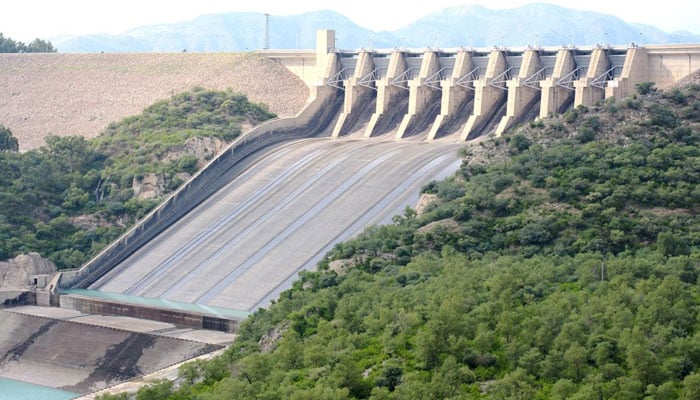LEGAL

The combined water storage in Pakistan’s three major reservoirs — Tarbela, Mangla, and Chashma — has plummeted to 391,000 acre feet, significantly lower than the 888,000 acre feet recorded on the same date last year, according to data shared by the Water and Power Development Authority (WAPDA) on Sunday.
This marks a 491,000 acre feet reduction compared to April 7, 2024, prompting growing concerns amid a drought alert issued by the Pakistan Meteorological Department.
Breakdown of Current Storage Levels:
- Tarbela Dam:
- Current: 81,000 acre feet
- Last Year: 265,000 acre feet
- Difference: -184,000 acre feet
- Mangla Dam:
- Current: 248,000 acre feet
- Last Year: 412,000 acre feet
- Difference: -164,000 acre feet
- Chashma Barrage:
- Current: 72,000 acre feet
- Last Year: 211,000 acre feet
- Difference: -139,000 acre feet
Water Inflow Trends:
- Indus River at Tarbela:
- Today: 18,600 cusecs
- Last Year: 19,200 cusecs
- Jhelum River at Mangla:
- Today: 21,800 cusecs
- Last Year: 33,200 cusecs
- Chashma Barrage:
- Today: 32,200 cusecs
- Last Year: 51,700 cusecs
The significant year-on-year drop in inflow across all three major water sources suggests the onset of early dry conditions, contributing to rapidly decreasing reservoir levels.
Meteorological Concerns
Amid these developments, the Pakistan Meteorological Department has officially issued a drought alert, raising alarm for possible water shortages affecting agriculture, drinking water supplies, and hydropower generation in the coming months.
Implications
Experts warn that this decline could severely impact the Kharif crop season, which relies heavily on canal irrigation fed by these reservoirs. Additionally, lower reservoir levels may strain power generation capabilities during peak summer months, potentially exacerbating load shedding and water scarcity.
With climate change increasingly impacting seasonal rain and snowmelt patterns, the situation calls for urgent water management strategies and public awareness to conserve existing resources.




